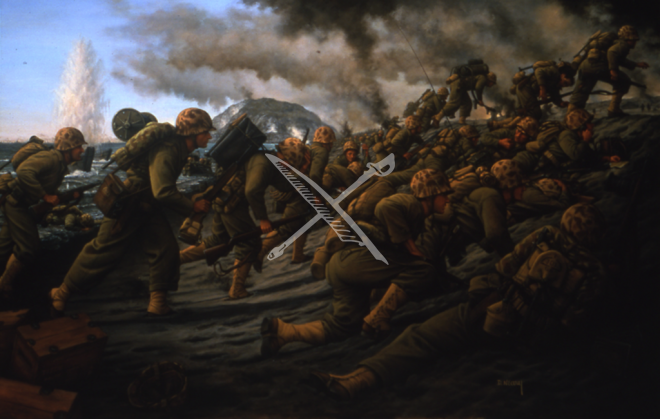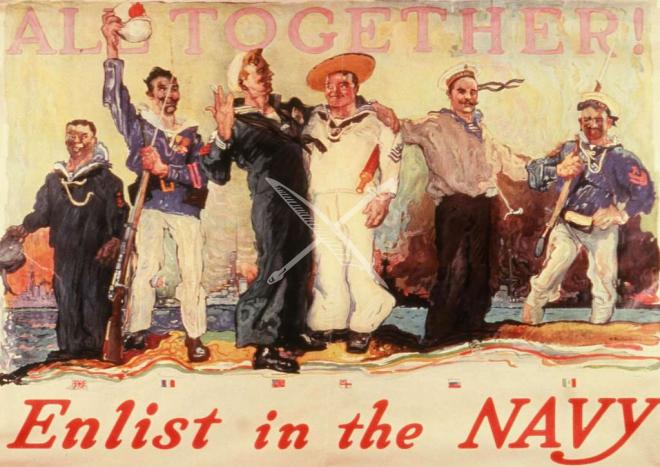
In Spray Pattern by Navy reservist Herbert C. Hahn, the Allen M. Sumner or Gearing class destroyer was escorting a carrier during the Korean War. Hahn had been called to active duty and was assigned to the USS Boxer (CV-12) where his spare-time sketches of ship activities caught the notice of senior officers. He requested and was assigned duty as a combat artist.
Categories:
Art

Perry Expedition to Japan 1852-1855:
In this lithograph by Sarony & Co., by artist W. HEINE E. BROWN, JR., DIREXT, we see the landing of Commordore Perry, officers & men of the squadron, to meet the Imperial Commissioners at Yoku-Hama, Japan, March 4, 1854.
Original in U.S. Navy Art Collection. (R.B. Griffin Collection)
Categories:
Art

This striking illustration, created by John Philip Falter for one of his more than 300 recruiting posters during World War II, was derived from a Navy photograph taken in 1943 of WAVE Virginia L. Scott. She is operating a radiotelegraph key sending a message from the code room of the Radio School at Madison, Wisconsin. Falter (1910-1982) enlisted in the Navy, but was quickly promoted and continued his work that in civilian life eventually garnered him 129 covers of The Saturday Evening Post along with numerous illustrations in publications including McCalls, LIFE, Look, Good Housekeeping, and Cosmopolitan.
Categories:
Art

Courtesy of the Beverley R. Robinson Collection, U.S. Naval Academy Museum, Annapolis, MD.
Categories:
Art

Coast Guard Signalman First Class Douglas A. Munro protects withdrawing Marines at Guadalcanal. During WWII the U.S. Coast Guard performed a wide variety of duties. One of the more important tasks was manning amphibious craft for the U.S. Navy. It was

"The U.S. Frigate Sabine, rescuing a battalion of U.S. Marines from the transport Governor" On the 2nd Nov. 1861 off the Coast of South Carolina the Sabine fell in with the Transport Governor, in a sinking condition and took from her a Battali
Categories:
Art

Charles Waterhouse's The Final Stand at Bladensburg shows Capt. Samuel Miller's 12-pounders in action beside the Washington Turnpike (USMC Art Collection)
Categories:
Art

4th Marine Division Crossing the Landing Beaches at Iwo Jima, by Donna Neary (USMC Art Collection)
Categories:
Art







